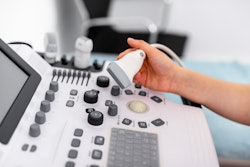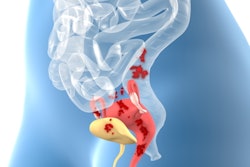The Society of Radiologists in Ultrasound (SRU) has issued a new expert consensus statement that aims to improve the evaluation of endometriosis.
The consensus, published April 9 in Radiology, provides recommendations for improving routine pelvic ultrasounds through additional maneuvers and imaging to improve diagnosis of deep endometriosis, according to the authors.
“Rightfully, patient advocates really want this,” statement first author Scott Young, MD from the Mayo Clinic told AuntMinnie.com. “They want better detection and there are a number of ways to detect endometriosis that are being worked on … all wonderful things that are happening.”
Previous reports show that endometriosis affects about 10% of women of reproductive age and occurs in 21% of women undergoing hysterectomy with chronic pelvic pain. In the U.S., there is an over seven-year delay between the onset of symptoms and a diagnosis of endometriosis, the researchers highlighted.
Endometriosis also affects between 20% and 50% of patients with infertility and subfertility. Deep endometriosis is the most severe form of endometriosis, extending to any depth beneath the peritoneal surface.
Ultrasound is the typical go-to imaging modality for women experiencing chronic pelvic pain or infertility issues. However, the researchers pointed out that few centers in the U.S. use ultrasound to screen for deep endometriosis, citing existing scan protocol limitations and lack of awareness.
Scott Young, MD, of the Mayo Clinic provides an overview of the expert consensus statement.
The SRU brought together experts from multiple disciplines to update recommendations that focus on improving endometriosis screening. The experts included radiologists, sonographers, gynecologists, reproductive endocrinologists, and minimally invasive gynecologic surgeons.
Some of the panel’s recommendations include the following:
- Transvaginal ultrasound (TVUS) of the posterior compartment
- Observing the relative positioning of the uterus and ovaries
- Utilizing the uterine sliding sign maneuver to improve endometriosis detection
- Direct and indirect observations of deep endometriosis assessed during the exam, and results reported using four categories: incomplete (APU-0), normal (APU-1), equivocal (APU-2), and positive (APU-3) with associated management recommendations
Statement senior and last author Wendaline VanBuren, MD, from the Mayo Clinic said that the panel looked at areas where endometriosis can be found outside the ovaries.
“Historically, routine pelvic ultrasound has done a good job of evaluating the uterus and ovaries,” she said. “But since so many patients may have disease in the posterior compartment, we wanted to make sure that that area is evaluated with this type of exam with our few additional suggested maneuvers.”
Wendaline VanBuren, MD, from the Mayo Clinic previews the next steps in the process.
Young and VanBuren said that these guidelines are intended for symptomatic patients at typical risk for endometriosis. Patients at elevated risk, meanwhile, could benefit from proceeding directly to advanced endometriosis imaging. This especially goes for if patients are likely to undergo surgery or if monitoring is needed in the setting of infertility and medical treatment, they added.
The consensus authors also wrote that validation studies will be needed to prove the accuracy of augmented pelvic ultrasound in widespread clinical use.
The full consensus statement can be found here.



















